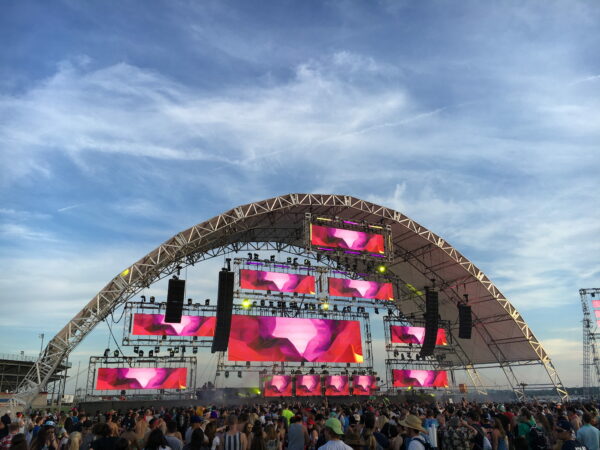Types of Stages Available for Rental
When it comes to organizing a concert or any other live performance, using the right stage is crucial to create an impressive and successful memory for both performers and the audience. There are various types of stage rental services available, each offering unique features and advantages. Below, you’ll see the list of the most common types of staging equipment and some recommendations on how to choose it correctly:
Proscenium Stage:
- Features a large, framed opening in front of the stage known as the proscenium arch.
- Best for theatrical performances and concerts with a focus on visual elements.
- Offers a traditional and formal atmosphere, often with a backstage area and wings for performers.
Thrust Stage:
- Extends into the audience area, surrounded by seating on three sides.
- Offers an intimate and immersive experience, allowing performers to engage closely with the audience.
- Suitable for concerts that aim to establish a strong connection between the performers and the crowd.
In-the-Round Stage:
- Placed at the center of the venue, surrounded by seating on all sides.
- Offers a 360-degree view for the audience, ensuring everyone has a close and unobstructed view of the performers.
- Enhances the sense of inclusivity and creates an intimate atmosphere.
Festival Stage:
- Designed specifically for outdoor events and festivals.
- Typically features a large, open-air platform with sturdy construction to withstand various weather conditions.
- Offers ample space for multiple performers, equipment, and large crowds.
Portable Stage:
- Versatile and easy-to-transport stage that can be set up in various locations.
- Ideal for small to medium-sized concerts, community events, or outdoor performances.
- Provides flexibility in terms of size and configuration.

Image source: PxFuel
How to choose a stage for a concert?
- Assess the available space in the venue and ensure the stage size fits appropriately.
- Consider the venue’s layout, acoustics, and any specific requirements or restrictions.
- Determine the expected number of attendees and choose a stage that can accommodate the crowd size.
- Evaluate the specific needs of the concert, such as space for equipment, lighting, sound systems, and special effects.
- Consider the type of performances and the mobility required for artists.
- Align the stage design with the desired aesthetic and atmosphere of the concert.
- Consider factors such as backdrop options, lighting capabilities, and branding opportunities
- Set a budget for stage rental and ensure it aligns with the overall event budget.
- Coordinate with the rental company to discuss logistics, setup requirements, and any additional services needed.
Choosing the right stage for a concert is essential for creating a captivating and immersive experience for both performers and the audience. Consider the various stage types available, evaluate the specific requirements of the concert, and take into account logistical and budgetary considerations. If you want to receive professional assistance when evaluating these factors, address professionals from the AudioVideoNYC company.
